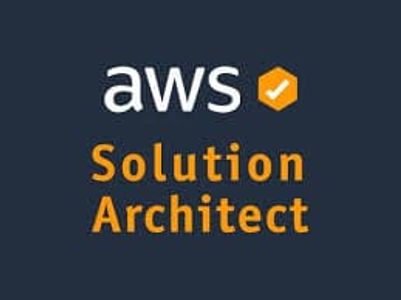AWS Essentials: A Beginner’s Guide to Cloud Computing
 Nicks Nick
21 May, 2025
11 mins read
16
Nicks Nick
21 May, 2025
11 mins read
16

Cloud computing has transformed the way businesses operate, enabling them to scale quickly, reduce costs, and improve performance. At the forefront of this transformation is Amazon Web Services (AWS), the world’s leading cloud platform. For beginners seeking to understand how aws courses works and what it offers, this guide will break down the essentials—from what AWS is to the core services it provides, and how you can get started in the world of cloud computing.
What is AWS?
Amazon Web Services (AWS) is a comprehensive cloud computing platform developed by Amazon. It offers over 200 fully featured services from data centers around the world. AWS allows individuals, startups, enterprises, and governments to access a suite of computing services such as storage, databases, analytics, networking, mobile development, and artificial intelligence—on-demand and on a pay-as-you-go basis.
AWS was launched in 2006 and has since become the most widely adopted cloud platform globally. It is known for its reliability, scalability, and cost-efficiency, supporting millions of customers in over 190 countries.
Why Learn AWS?
With cloud computing becoming a critical infrastructure for businesses and technology professionals, understanding AWS opens up countless opportunities. Whether you're an aspiring developer, a systems administrator, or a business owner looking to modernize operations, learning AWS equips you with tools to design, deploy, and manage cloud-based applications effectively.
Here are a few reasons why AWS is worth learning:
- High Demand: AWS skills are in high demand in the job market, with roles such as Cloud Engineer, DevOps Engineer, and Solutions Architect among the most sought after.
- Versatility: AWS serves various industries, including healthcare, finance, education, gaming, and government.
- Global Reach: AWS has data centers in multiple regions across the globe, ensuring low-latency access and high availability.
Core Concepts of Cloud Computing
Before diving into AWS services, it's important to understand the foundational concepts of cloud computing:
- On-Demand Self-Service: Users can provision computing resources without human intervention.
- Broad Network Access: Services are accessible over the network via standard devices.
- Resource Pooling: Resources are shared across multiple users using a multi-tenant model.
- Rapid Elasticity: Resources can be scaled up or down quickly to meet demand.
- Measured Service: Usage is monitored, controlled, and billed based on consumption.
Cloud computing comes in three main service models:
- Infrastructure as a Service (IaaS): Provides virtualized computing resources over the internet (e.g., Amazon EC2).
- Platform as a Service (PaaS): Offers hardware and software tools over the internet (e.g., AWS Elastic Beanstalk).
- Software as a Service (SaaS): Delivers software applications over the web (e.g., Amazon WorkDocs).
Key AWS Services for Beginners
AWS offers a vast array of services, but beginners should focus on a few core offerings that form the foundation of most cloud solutions.
1. Amazon EC2 (Elastic Compute Cloud)
EC2 provides scalable virtual servers in the cloud. You can launch, configure, and manage servers for applications or development work. It’s a great starting point to learn how cloud-based infrastructure works.
Use Case: Hosting websites, running backend services, or performing data processing tasks.
2. Amazon S3 (Simple Storage Service)
S3 is an object storage service that offers industry-leading scalability, data availability, and security. It’s used to store and retrieve any amount of data at any time.
Use Case: Storing files, backups, static website content, or media.
3. Amazon RDS (Relational Database Service)
RDS makes it easy to set up, operate, and scale a relational database in the cloud. It supports multiple engines like MySQL, PostgreSQL, SQL Server, and Oracle.
Use Case: Managing structured data for applications such as CRMs, ERPs, and e-commerce platforms.
4. AWS IAM (Identity and Access Management)
IAM allows you to manage access to AWS services and resources securely. You can create users, groups, and permissions to control who can do what in your AWS environment.
Use Case: Ensuring that users have the appropriate level of access to cloud resources.
5. AWS Lambda
Lambda is a serverless compute service that lets you run code without provisioning or managing servers. You only pay for the compute time you consume.
Use Case: Automating tasks, real-time file processing, or creating microservices.
6. Amazon CloudWatch
CloudWatch provides monitoring for AWS resources and applications. It helps you collect and track metrics, log files, and set alarms.
Use Case: Monitoring application health, setting alerts, and troubleshooting issues.
7. AWS CloudFormation
CloudFormation lets you model and provision AWS resources using templates. It’s a key tool for infrastructure as code (IaC) practices.
Use Case: Automating deployment of complex environments.
Getting Started with AWS
To begin your journey with AWS, follow these simple steps:
1. Create an AWS Account
Start by signing up for an AWS account. AWS offers a free tier that allows you to try many services for free, within certain usage limits.
2. Explore the AWS Management Console
The AWS Console is a web-based user interface where you can access and manage AWS services. It’s user-friendly and a good place for beginners to experiment.
3. Use the AWS Free Tier
The free tier includes services like EC2, S3, Lambda, and RDS with usage limits. It’s perfect for testing and learning without incurring charges.
4. Try a Simple Project
Set up a static website using S3 and Route 53, or launch a basic web server on EC2. Small hands-on projects help reinforce what you’ve learned.
5. Learn Through Documentation and Training
AWS provides comprehensive documentation, tutorials, and a learning platform called AWS Skill Builder, which includes free and paid courses for various skill levels.
AWS Pricing Overview
Understanding AWS pricing is critical for managing costs. Most services follow a pay-as-you-go model, where you’re charged based on actual usage. Some services offer reserved instances or savings plans for long-term cost savings.
Key pricing principles:
- Per-Second Billing: Applies to services like EC2 and Lambda.
- Storage and Transfer Costs: S3 and other storage services charge based on the volume of data stored and transferred.
- Free Tier: Offers limited free usage for 12 months after account creation.
Always monitor your usage via the AWS Billing Dashboard and set up budgets and alerts to avoid surprises.
Certifications and Career Path
If you're serious about building a career in cloud computing, AWS certifications validate your skills and open doors to new opportunities.
Begin with the AWS Certified Cloud Practitioner, designed for non-technical users and newcomers. Once comfortable, pursue role-specific certifications such as:
- AWS Certified Solutions Architect – Associate
- AWS Certified Developer – Associate
- AWS Certified SysOps Administrator – Associate
Advanced-level and specialty certifications are available as you progress.
Best Practices for Beginners
To make the most of your AWS learning experience, follow these tips:
- Start Small: Focus on learning the basics before moving on to more advanced services.
- Stay Secure: Always follow security best practices, such as using IAM roles, setting strong passwords, and enabling multi-factor authentication.
- Practice Hands-On: Reading is helpful, but nothing beats hands-on experience in the AWS Console.
- Keep Learning: AWS updates its services regularly. Stay current with new features and best practices.
- Join a Community: Engage with online forums, study groups, or local meetups to learn from others.
Conclusion
AWS offers a powerful and flexible platform for building and managing applications in the cloud. As a beginner, understanding the fundamentals of cloud computing and AWS core services provides a strong foundation for personal growth and professional development. With the right approach and a willingness to learn, you can quickly become proficient in AWS and unlock the full potential of cloud computing.
Written By:
Nicks Nick



Hotels at your convenience
Now choose your stay according to your preference. From finding a place for your dream destination or a mere weekend getaway to business accommodations or brief stay, we have got you covered. Explore hotels as per your mood.


